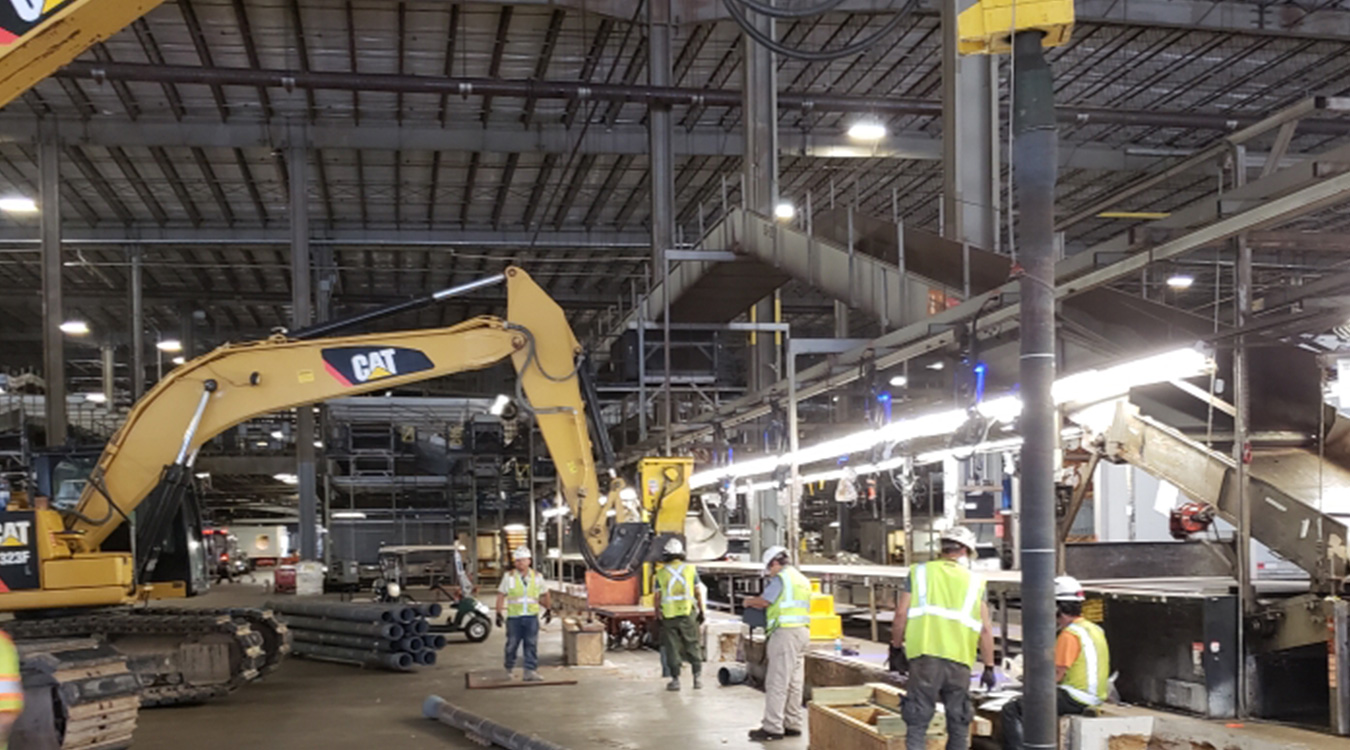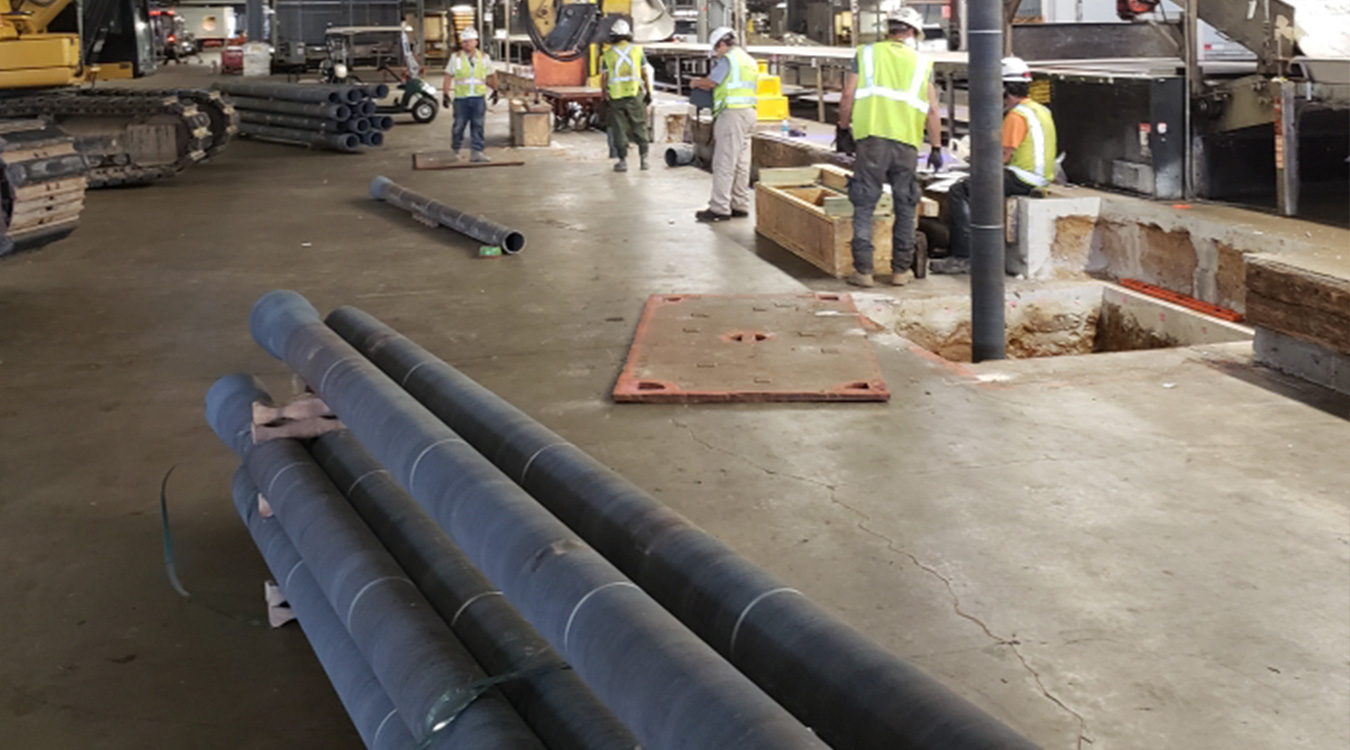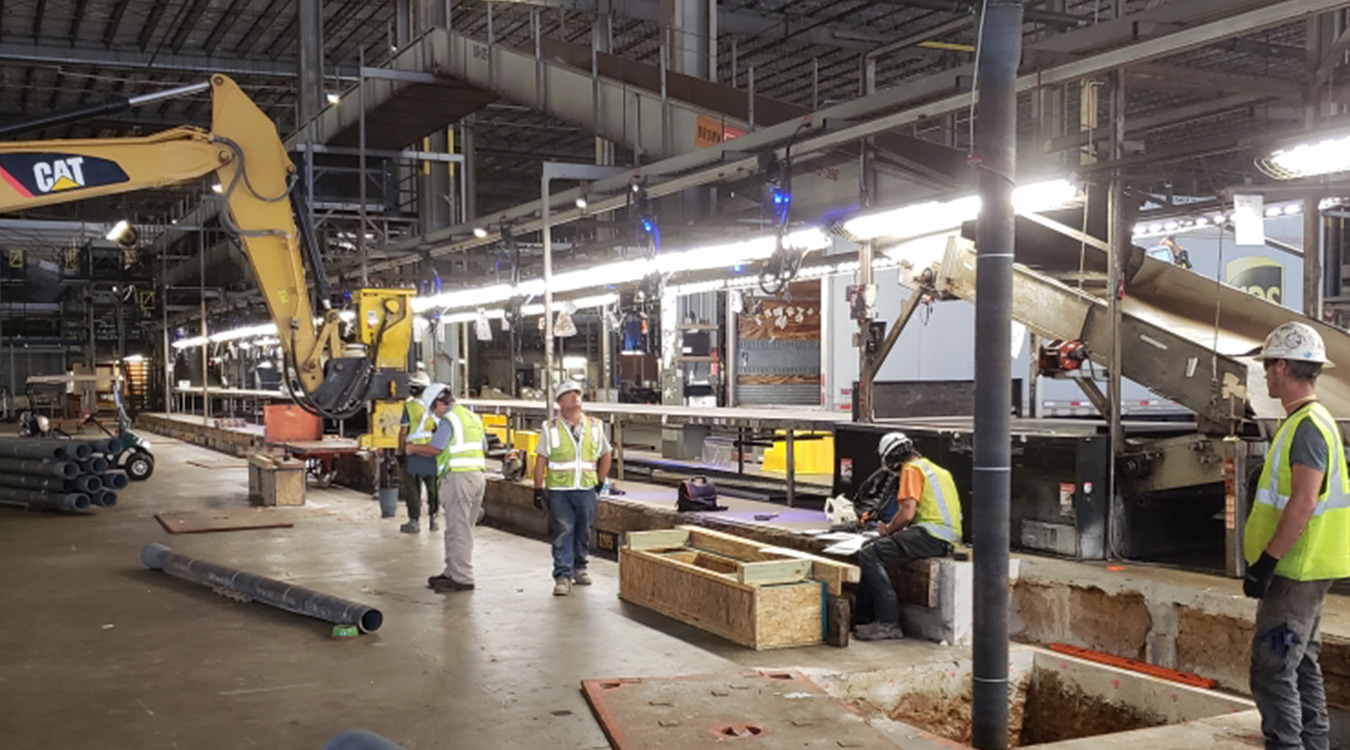In 2019, DuroTerra and GeoStructures Inc, longstanding partners of Tiroler Rohre GmbH in the USA, received the order to build the foundation for a mezzanine floor at Philadelphia Airport in the 1,000 square meter distribution center of an international logistics group. Due to the geotechnical conditions, piles made by Tiroler Rohre GmbH type 170 / 9.0 were used here. One advantage that speaks in favor of the use of ductile iron piles is the smaller space required during installation. The height of the ceiling spaces was only between 6.5 to 11.5 meters. Another argument, especially when compared to micropiles, is the much faster installation. Generally speaking, the significant cost savings compared to other pile systems for the method used. The operation in the logistics center had to be guaranteed during the entire construction period of four weeks. The circumstance of less pollution of the construction site was therefore another reason for using the TRM piling system. Even the low-vibration installation of the piles due to low vibration was an argument in favor of the products, made in Austria. On-site soil conditions consisted of sand filling to a depth of 3.5 meters, followed by a layered soft / loose alluvial deposit of sand, silt and clay that extended to a depth of 21.5 meters. The loose layer was underlaid by medium-dense to very dense sand and gravel with SPT-N30 - values of 18 to 79, which turned into hard clay from a depth of 28 to 30 meters. The groundwater was 2.5 to 3 meters below the terrain. Based on a number of key factors, including site logistics, open spaces, active plant operations and several similar projects where ductile piles have been successfully deployed, the project team worked closely with DuroTerra during the design phase to evaluate feasibility and develop blueprints and specifications.
Originally, two design capacities were determined for ductile pile piles. Less for piles that are built into the sand and gravel layer to match the original pile foundations, and higher bearing capacities for piles that are installed deeper to embed in the hard clay. A total of 288 piles were needed to support the new foundations. These could be installed in just over four weeks by two work teams. A pile load test program was created to determine the load bearing capacity of the piles as a function of different pile times and depths. The results of the test program confirmed a capacity of 450 kN with a pile time of only 2 seconds / 3cm in the sand and gravel layer. Greater capacities of 600 kN and 750 kN were measured in the clay at fixed times of 50 seconds / 3 cm. Logistical coordination on site was indispensable. Immediately before working on each new pile site, the existing floor slabs were sawn and removed, followed by excavation. The piles were then installed at each prepared location. Since the plant was mainly operated in the 2nd and 3rd shift, the pile crews began installing it during a modified daily schedule to avoid impacting other areas in a shift. All equipment (hoses, wires, cables, etc.) had to be removed between layers so that access to the facilities during the construction phase remained free. The piles were driven at depths of 22 to 34 meters and have a load capacity of 450 to 750 kN. In limited room heights the standard 5 m long pile sections were connected with coupling sleeves.
Fast. Simple. Safe.
www.trm.at


